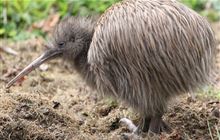Understanding translocation success
Introduction
Work out the likely success of your species translocation, when you follow best practices and factor in genetic variability.Will your planned translocation succeed?
Translocation is one of a range of tools you can use when carrying out a species recovery or ecological restoration project. However, translocation success is highly variable depending on the target species and release site, with many translocations (c. 40–60%) failing. Therefore, careful planning is essential, particularly when selecting an appropriate release site.
Successful translocations have high initial survival rates, rapid population growth and ultimately produce large, genetically diverse populations that persist well into the future.
The following factors are critical for successful translocations:
- the number of individuals you transfer (founders)
- the type, quality and size of habitat at the release site
- the extent of predator control at the release site
There is ongoing scientific debate around how translocation success should be defined and measured, but all translocations go through several distinct phases. The phases are: transfer, survival, evidence of reproduction, population growth, and viable population. Consideration of these phases may help you to assess the success of your translocation.
Understand the basics
Choose your species
North Island robin translocation

Calculate how successful your translocation of North Island robin is likely to be.
North Island saddleback/tieke translocation

Calculate how successful your translocation of North Island saddleback/tieke is likely to be.
South Island saddleback/tieke translocation

Calculate how successful your translocation of South Island saddleback/tieke is likely to be.
North Island kōkako translocation

Calculate how successful your translocation of North Island kōkako is likely to be.
North Island brown kiwi translocation

Calculate how successful your translocation of North Island brown kiwi is likely to be.







